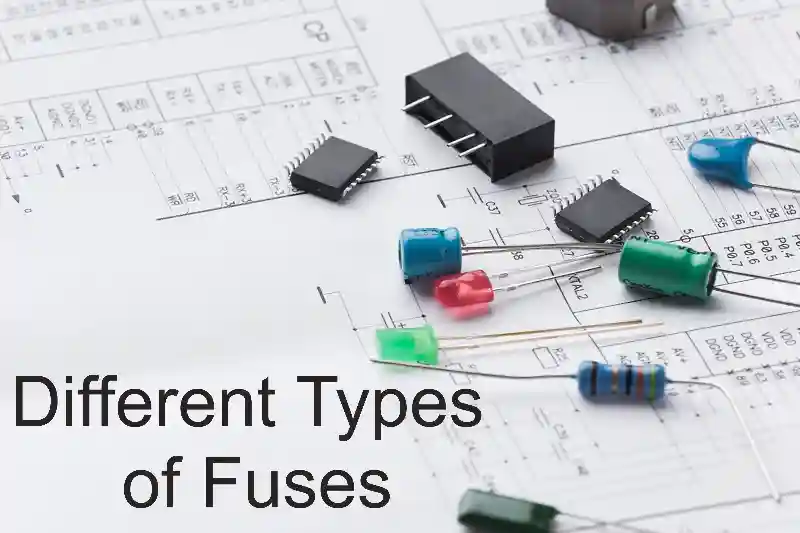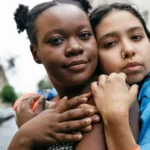Fuses protect your home from fire. They stop too much power from flowing. This Complete Guide to Choosing and Installing Fuse will help you stay safe.

What Are Fuses?
Basic Facts About Fuses
A fuse is a small safety part. It goes in your electrical box. When too much power flows, the fuse breaks. This stops the power right away.
How Fuses Work
Fuses have a thin metal strip inside. Here’s what happens:
- Power flows through the metal strip
- Too much power makes it hot
- The strip melts and breaks
- Power stops flowing
- Your home stays safe
Why You Need Fuses
Fuses keep you safe in many ways:
- Stop house fires
- Protect your things
- Keep you from getting hurt
- Follow building rules
- Help with insurance

Different Types of Fuses
Glass Fuses
These fuses have clear glass. You can see inside them:
- Easy to check if broken
- Simple to change out
- Used in many homes
- Come in different sizes
- Cost less money
Hard Fuses
These fuses are made of hard material:
- Don’t break from heat
- Last longer
- Used in big buildings
- Handle more power
- Cost more money
Big Fuses
These fuses handle lots of power:
- Used in stores and offices
- Have metal ends
- Come in many sizes
- Handle 1 to 600 amps
- Work fast or slow
Screw-In Fuses
Old homes use these fuses:
- Twist in like a light bulb
- Round shape
- Used in old boxes
- Come in 15, 20, or 30 amps
- Hard to put wrong one in
Tiny Fuses
New gadgets use very small fuses:
- Fit on circuit boards
- Work very fast
- Very exact sizes
- Put in by machines
- Protect computers
Car Fuses
Cars need special fuses:
- Flat blade shape
- Different colors
- Handle car bumps
- Don’t rust
- Many sizes
How to Pick the Right Fuse
Find the Right Size
You need the right size fuse:
- Check how much power you use
- Add 25% more for safety
- Pick the next size up
- Think about startup power
- Check the temperature
Check the Voltage
The fuse must handle your voltage:
- Must be higher than your system
- AC or DC power types
- Leave room for safety
- Use standard sizes
- Meet safety rules
Breaking Power
Fuses must handle big problems:
- Find your fault current
- Pick a fuse that can handle it
- Match your system needs
- Keep everyone safe
- Follow the rules
How Fast It Works
Different jobs need different speeds:
- Fast fuses for computers
- Slow fuses for motors
- Regular fuses for lights
- Very fast for chips
- Pick what you need
Where You Live
Your area affects fuse choice:
- Hot or cold weather
- Wet or dry places
- Shaking or bumping
- Chemicals in the air
- Sun damage
Getting the Size Right
Basic Rules
Use this simple math:
- Take your normal power use
- Times it by 1.25
- Pick the next fuse size up
- This keeps you safe
- Follow this rule always
Protect Your Wires
Pick fuses to protect wires:
- Use wire size charts
- Make adjustments for heat
- Think about where wires go
- Group wires together
- Follow electrical rules
Count Your Power Use
Know how much power you use:
- Measure what you really use
- Motors use more at startup
- Some power is wasted
- Harmonics cause problems
- Plan for more use later
Stay Safe
Add extra safety:
- Use 125% for always-on loads
- Use more for important things
- Things get old and change
- Parts aren’t perfect
- Keep good safety room
Standard Sizes
Fuses come in set sizes:
- 1, 2, 3, 5, 6, 8, 10 amps
- 12, 15, 20, 25, 30 amps
- 35, 40, 45, 50, 60 amps
- 70, 80, 90, 100, 110 amps
- Bigger ones for factories
How to Stay Safe
Before You Start
Get ready safely:
- Turn off main power
- Test with a tester
- Lock the power off
- Wear safety gear
- Have fire tools ready
Tools You Need
Get the right tools:
- Safe screwdrivers
- Power tester
- Fuse pullers
- Wire strippers
- Electrical tape
Safety Clothes
Wear the right gear:
- Safety glasses
- Special gloves
- Safe shoes
- Fire-safe clothes
- Hard hat for work sites
Make Area Safe
Set up your work space:
- Good lights
- Remove fire risks
- Clear exit paths
- First aid nearby
- Emergency phone numbers
How to Install Fuses
Turn Off Power
Make it safe first:
- Find your electrical box
- Find the right switch
- Turn it all the way off
- Test with a tester
- Lock it if you can
Take Out Old Fuse
Remove fuses safely:
- Use fuse pullers only
- Don’t touch metal parts
- Pull out broken fuse
- Look at fuse holder
- Clean if dirty
Put In New Fuse
Install the new fuse right:
- Check it’s the right size
- Make sure it fits
- Push in firmly
- Check connections
- Make sure it’s tight
Test Your Work
Check everything works:
- Look at your work
- Test with tester
- Try your equipment
- Use heat camera if you have one
- Write down what you did
Turn Power Back On
Start up safely:
- Remove locks
- Turn switch on slowly
- Watch how it works
- Check fuse is working
- Keep records
Common Mistakes
Wrong Size Fuse
This causes big problems:
- Too big doesn’t protect
- Too small blows too much
- Wrong voltage is dangerous
- Wrong timing causes issues
- Weird sizes confuse people
Bad Connections
Poor connections are dangerous:
- Loose fuses
- Dirty connections
- Wrong size holders
- Bent parts
- Not pushed in enough
Weather Problems
Not thinking about weather:
- Water gets in
- Too hot or cold
- Shaking loosens things
- Chemicals eat metal
- Sun breaks plastic
No Records
Not writing things down:
- Don’t know fuse sizes
- Don’t know when installed
- Can’t find right circuits
- No repair history
- Hard to fix problems
Taking Care of Fuses
Check Them Often
Look at fuses regularly:
- Check monthly
- Deep look every 3 months
- Heat picture yearly
- Clean every 6 months
- Replace every 5 years
What to Look For
Check these things:
- Fuse wire condition
- Color changes
- Damage to holder
- Tight connections
- Write down what you find
How to Test
Test fuses these ways:
- Check if they work
- Test insulation
- Check connections
- Use heat camera
- Test timing
When to Replace
Replace fuses when:
- They blow
- Change color
- Connections are bad
- Loose in holder
- Too old
Keep Records
Write down everything:
- When installed
- What size
- When replaced
- Test results
- When to check next
Fixing Problems
Fuses Blow Too Much
This happens because:
- Really too much power
- Wrong size fuse
- Loose wires
- Broken equipment
- Short circuits
Fuses Blow for No Reason
This happens when:
- Fuse too small
- High startup power
- Bad connections
- Too hot
- Fuse getting old
Fuse Doesn’t Work
Protection fails when:
- Fuse too big
- Bad connections
- Broken fuse
- Someone bypassed it
- Wrong type
Getting Too Hot
Heat problems from:
- Loose connections
- Too much power
- No air flow
- Bad holders
- Dirty connections
Stay Safe
Electrical Dangers
Watch out for these:
- Getting shocked
- Arc flash burns
- Hot parts burning you
- Fires starting
- Gas explosions
Keep Yourself Safe
Protect yourself:
- Always turn off power
- Use good testers
- Wear safety gear
- Lock power off
- Don’t work alone
Follow Rules
Rules keep you safe:
- National electric rules
- Local area rules
- World standards
- Industry rules
- Insurance needs
Get Help
Electricians help because:
- They know the rules
- They install right
- They know safety
- Insurance covers them
- They give warranties
Special Uses
Motors
Motors need special care:
- Calculate starting power
- Use slow fuses
- Work with overload parts
- Protect from losing phase
- Handle temperature changes
Computers
Electronics need careful protection:
- Use fast fuses
- Low energy ratings
- Protect computer chips
- Work with surge protectors
- Handle interference
Big Systems
Large systems need planning:
- Study how they work together
- Make them work in order
- Study arc flash danger
- Ground systems right
- Make maintenance easy
Solar Power
Solar systems have special needs:
- DC fuses needed
- String fuses
- Combiner boxes
- Inverter protection
- Follow solar rules
Money Matters
First Costs
Fuses cost different amounts:
- Basic fuses cost less
- Special fuses cost more
- Quality affects value
- Buying more saves money
- Installation costs extra
Long-term Costs
Total cost includes:
- Replacement fuses
- Maintenance work
- Downtime losses
- Energy waste
- Insurance effects
Cost Study
Think about value:
- Compare costs and benefits
- Better reliability worth more
- Safety improvements valuable
- Less downtime saves money
- Insurance may be cheaper
New Fuse Ideas
Smart Fuses
New technology brings:
- Watch from far away
- Predict problems
- Talk to computers
- Keep records
- Work with building systems
Better for Earth
Green improvements:
- No lead solder
- Materials can be recycled
- Less harm to earth
- Efficient making
- Last longer
Smaller Sizes
Fuses getting smaller:
- Tiny packages
- Handle more power
- Get rid of heat better
- Work better
- Cost less to make
Conclusion
This Complete Guide to Choosing and Installing Fuse teaches electrical safety basics. Right fuses protect equipment and prevent fires. Proper installation follows safety rules. Know different fuse types and pick correct sizes. Install safely with power off. Check fuses regularly through visual inspection. Get professional help for complex electrical work. Safe electrical work requires knowledge and preparation. When unsure, consult qualified electricians for assistance.






